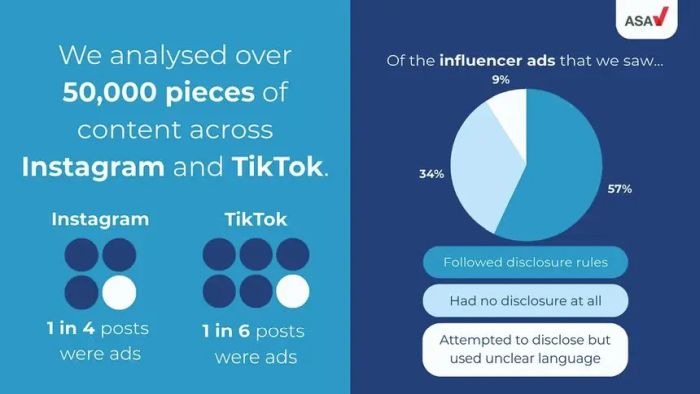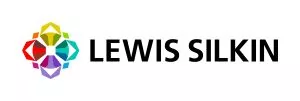- with readers working within the Aerospace & Defence industries
- within Cannabis & Hemp, Strategy and Privacy topic(s)
The ASA has published a report considering whether influencers are sticking to the rules about making it clear when their posts are ads. The report shows that the positive trend for open and honest disclosure continues. However, the ASA also said that influencers, brands, agencies and platforms need to continue to work to ensure all the ads users engage with on social media are clearly disclosed.
The ASA has used its AI-based ad monitoring system to assess over 50,000 pieces of content on Instagram and Tiktok, with a sample being reviewed by humans. This was their second "sweep", following one in 2021.
One key point the ASA made in this new report is that they recognise platforms have their own ad disclosure tools such as a statement that a post is a paid promotion. While these don't use 'Ad' as a word, influencers, brands and agencies are strongly advised to use those platform tools, and these may be used in addition to or instead of #ad. The ASA has not been entirely clear on that point over recent years, so it is useful to have a bit more clarity.
Key findings
- Based on the study findings, approximately 57% of influencer content on Instagram and TikTok in the UK is likely to be adequately disclosed as advertising in compliance with the CAP Code.
- 25% of the content on Instagram was categorised as likely to be advertising. On TikTok, it was about one in six pieces. The rest was non-advertising content.
- Statistically, there was no significant difference in advertising disclosure rates between Instagram (55%) and TikTok (60%), nor among differing types of content: Instagram posts (58%), reels (56%) and Stories (53%) and TikTok posts (60%).
- 20% of the undisclosed ads did make some attempt at using a disclosure label (gifted, pr trip, affiliate, etc), but the ASA has ruled, and the CMA has advised, that those labels do not adequately convey the commercially persuasive intent of the advertising posts.
- Over 50% of ads relating to the Fashion and Travel sector were undisclosed or inadequately disclosed.
- The influencer accounts monitored for the 2021 report showed a significant improvement in ad disclosure from 35% in 2021 to 49% in 2024 of their ads adequately disclosed. In part, the ASA attributes this to its compliance monitoring and action. However, the ASA says that further targeted enforcement action is required, as the overall level is below where it needs to be.
- Across the sample groups, 80% of likely advertising content that was then categorised as Undisclosed or Inadequately disclosed, was completely undisclosed, as no attempt was made to disclose it as advertising.
The ASA's key recommendations
- Influencers, agencies, brands and platforms all have a role in ensuring that advertising content is clearly disclosed.
- Brands and agencies can use their creativity to adequately disclose when content is advertising, but they must ensure that the content is obviously identifiable as ads. Therefore, the ASA and CMA strongly advise the use of "Ad" or "#ad". If influencers want to make a distinction as to the type of commercial relationship involved, the ASA and CMA recommend putting "Ad" clearly first. For example, "Ad - Gifted" or "#ad – prtrip".
- Disclosing advertising, in each piece of advertising content, is required across all pieces of related advertising content; influencers and brands cannot rely on disclosure in bios or in other advertising posts to comply.
- Own brand content: if the content makes it clear that you are advertising your own brand, the ASA will deem that to be "clear by context" and so no additional ad disclosure label is required. However, if it is not "clear by context", it must be disclosed as an ad through the upfront inclusion of an ad disclosure label, such as "Ad". If the name of your brand is the same as that of your name account, there is a greater chance of ad disclosure being deemed "clear by context". The ASA has previously ruled that disclosure using abbreviated versions of an influencer's name is unlikely to be considered clear disclosure.
- If it is not the same, the ASA says that the best way to ensure you are complying with the rules, is to include an ad disclosure label.
- Platforms have their own ad disclosure tools such as a statement that a post is a paid promotion. Influencers, brands and agencies are strongly advised to use them (and the report says they can be used as well as or instead of #ad).
- Read CMA and CMA guidance and use the self-help tool for quick advice about when and how to disclose advertising content.
The ASA says that it will support influencers and brands with guidance. However, it emphasises that where it sees persistent non-compliance, it will apply sanctions.
Consumer law
The rules on identifying ads are based on legislative requirements, which are now in the Digital Markets, Competition and Consumers Act 2024 and came into force in April. Therefore, it isn't just a case of worrying about the ASA. If a breach is egregious enough, or is causing sufficient consumer detriment, the CMA will take a look too and its sanctions far outweigh those of the ASA.
The ASA and CMA issued guidance on how to label influencer marketing appropriately, which has been updated to reflect the DMCC Act.

The content of this article is intended to provide a general guide to the subject matter. Specialist advice should be sought about your specific circumstances.




